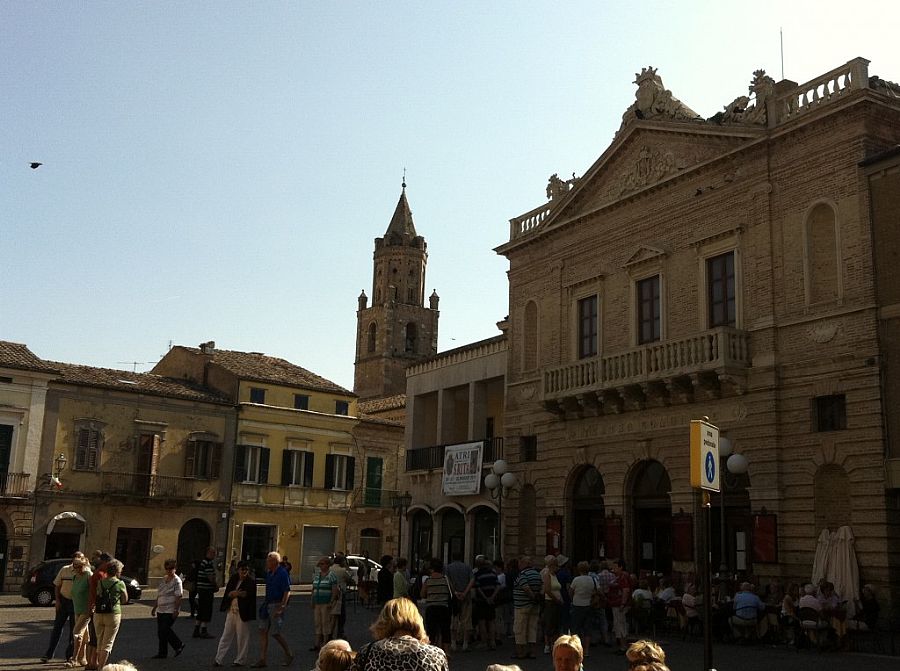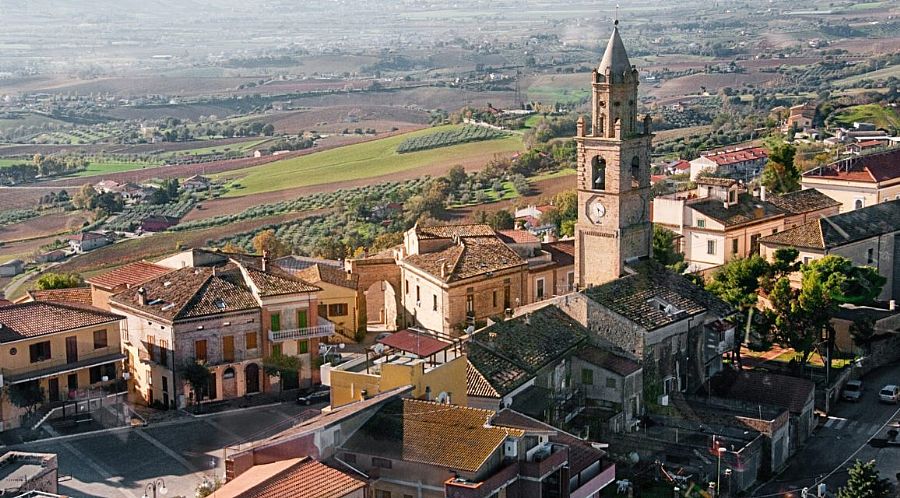Atri

A magnificent hill town in Abruzzo, Atri contains so many gems and monuments it will surprise you. Too often overlooked, the beautifully kept medieval centro storico is full of interesting places and eye-pleasing details. Atri has very ancient origins, going back to the Osci-Sabelli-Sabini peoples. They joined the Italic League with the Piceni (from the zone around Ascoli Piceno) in a confederation against Rome. They lost, and became a Roman colony in 289 BC. The town still minted its own money, though. They carried on commerce with the Etruscans, Umbri and Greeks, exporting olive oil and wine from their ancient port (now part of Pineto). The town was named Hatria then.
The area saw incursions from the Barbarians and Saracen pirates. In 1082, Trasmondo, the Count of Penne, ceded it to the Monastery of Farfa. The breathtaking cathedral was completed in 1305; dedicated to Santa Maria Assunta, it is a national monument. The frescoes from the 14th century by Andre de Litio are astounding.
In 1393, the territory was sold to a count of the Acquaviva clan, an arrangement that also gave him an advantageous marriage that brought with it the Contea of Conversano. He made Atri the capital of his Duchy. The Acquaviva family had close ties to the Aragon rulers.
The centro storico retains is Medieval appeal all around the streets and palazzi. There are hidden surprises, too: Roman relics lurk underground, like the forum and terme below Piazza del Duomo, and the underground cisterns. In the cathedral, a Roman cistern became the church's crypt. Down there, you can also see a part of the ancient wall from the temple of Hercules. Don't miss the frescoes of the Coro dei Canonici while you're at the duomo, and the interior cloister is a tranquil, beautiful spot.
The church of Santa Reparata is dedicated to the city's patron saint, and it was built in 1355, though the interior was redecorated in Baroque style in 1740. The church of Sant'Agostino is now a lovely auditorium. There are a dozen churches here, so you have a lot to see.
There are regal palaces around Atri, from the Palazzo Ducale of the Acquaviva, to Palazzo Illuminati, and many others. Ancient walls, bastions, the Rocca d'Atri fortress above - see what we mean? This town will surprise you! The views of the sea help make it special, too.
You'll eat well - the handmade pasta, the local cheese, those delectable skewers of lamb meat called arrosticini - yum. This is wine country, too, so sample the Montepulciano d'Abruzzo (red) or Trebbiano (white). Interestingly, Atri is one of Italy's first beer towns! There are documents from the 1100s and 1200s talking about the production of grain and barley for a fermented beverage. So, a pizza and beer is in order here, too :)
Explore handpicked self catering homes in Abruzzo.

 Amalfi Coast
Amalfi Coast Sorrento Coast
Sorrento Coast Tuscany
Tuscany Cilento National Park
Cilento National Park Lake Como
Lake Como Rome and Latium
Rome and Latium Umbria
Umbria Capri and Ischia
Capri and Ischia Venice
Venice Puglia (Apulia)
Puglia (Apulia) Liguria
Liguria Sicily
Sicily Lake Maggiore
Lake Maggiore Lombardy
Lombardy Sardinia
Sardinia Lake Garda
Lake Garda Abruzzo and Marche
Abruzzo and Marche Calabria
Calabria

